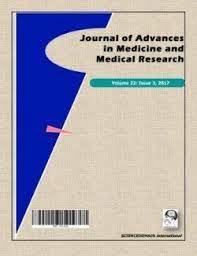Correlation among Biochemical Profile Markers and Diagnostic Value of Uric Acid Level to Differentiate between Glucose Abnormalities
Authors
Elham Kalantari1, Bizhan Iraj2, Khosro Taei1* and Masoud Amini3
Affiliations
Abstract
Aims: The current study aims to compare the relationship among uric acid level, fasting blood glucose, 2-hour glucose, HbA1C and diagnostic value of uric acid level with diabetes and Pre-diabetes in healthy people and patients with pre-diabetes and diabetes.
Study design: It is a descriptive – analytical study.
Methodology: This study composed of a total of 1080 participants classified into three groups (n = 360) including healthy people (HbA1C<5.6 and fasting plasma glucose<100 mg/dl), prediabetic (5.7%≤ HbA1C<6.5% and 100 mg/dl < fasting plasma glucose < 126 mg/dl) and diabetic patients (HbA1C≥6.5 and fasting plasma glucose ≥126 mg/dl) presented at Endocrinology and Metabolism Research Center in Isfahan, during 2008 – 2013. The parameters including gender, BMI, blood pressure, fat level, fasting plasma glucose, 2-hour postload glucose, HbA1C and serum uric acid were recorded and analyzed with SPSS (Ver. 20).
Results: Mean uric acid levels of healthy, prediabetic and diabetic groups were 4.89±1.37 mg/dl , 5.21±1.29 mg/dl and 5.01±1.44 mg/dl respectively, indicating a significantly higher level in prediabetic group (P<0.001). Blood sugar levels had a significant increase in healthy people (P<0.001) compared to other groups. Serum uric acid was positively correlated with fasting plasma glucose and HbA1C in general but weak in prediabetic and healthy subjects versus a negative correlation in the diabetic group. In addition, serum uric acid cut-off (≥4.75 mg/dl) can be a good diagnostic criterion for pre-diabetes prediction compared with normal people (P<0.05). Conclusion: Although serum uric acid is not a target for the treatment of asymptomatic hyperuricemia and not a risk marker of clinical activities, it may be considered as a new therapeutic target for prevention of diabetes or its progression.
Keywords: Pre Diabetes; diabetes; serum uric acid; 2-hour Post load Glucose; fasting plasma Glucose; HbA1C.
Study design: It is a descriptive – analytical study.
Methodology: This study composed of a total of 1080 participants classified into three groups (n = 360) including healthy people (HbA1C<5.6 and fasting plasma glucose<100 mg/dl), prediabetic (5.7%≤ HbA1C<6.5% and 100 mg/dl < fasting plasma glucose < 126 mg/dl) and diabetic patients (HbA1C≥6.5 and fasting plasma glucose ≥126 mg/dl) presented at Endocrinology and Metabolism Research Center in Isfahan, during 2008 – 2013. The parameters including gender, BMI, blood pressure, fat level, fasting plasma glucose, 2-hour postload glucose, HbA1C and serum uric acid were recorded and analyzed with SPSS (Ver. 20).
Results: Mean uric acid levels of healthy, prediabetic and diabetic groups were 4.89±1.37 mg/dl , 5.21±1.29 mg/dl and 5.01±1.44 mg/dl respectively, indicating a significantly higher level in prediabetic group (P<0.001). Blood sugar levels had a significant increase in healthy people (P<0.001) compared to other groups. Serum uric acid was positively correlated with fasting plasma glucose and HbA1C in general but weak in prediabetic and healthy subjects versus a negative correlation in the diabetic group. In addition, serum uric acid cut-off (≥4.75 mg/dl) can be a good diagnostic criterion for pre-diabetes prediction compared with normal people (P<0.05). Conclusion: Although serum uric acid is not a target for the treatment of asymptomatic hyperuricemia and not a risk marker of clinical activities, it may be considered as a new therapeutic target for prevention of diabetes or its progression.
Keywords: Pre Diabetes; diabetes; serum uric acid; 2-hour Post load Glucose; fasting plasma Glucose; HbA1C.

